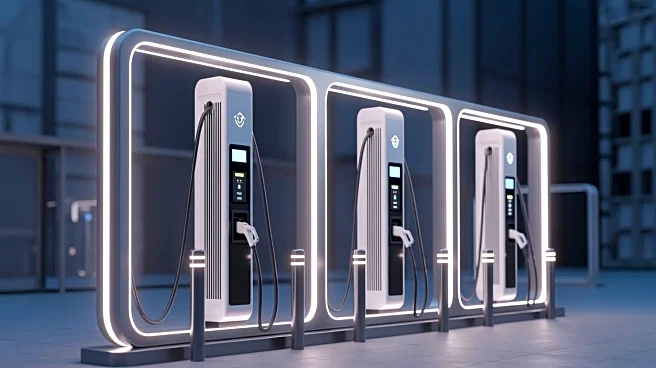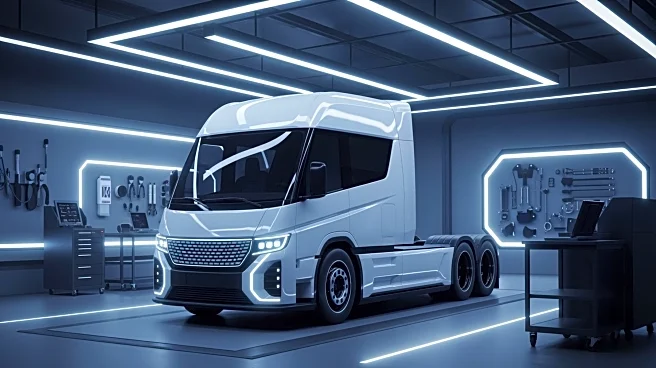What's Happening?
The US auto industry experienced a significant increase in sales during the third quarter of 2025, marking the best performance in several years. Overall sales were 5% higher than in the third quarter of 2024,
and 4% higher than in 2023, with a notable 21% increase compared to 2022 and 2021. Brands such as Ford and Hyundai showed substantial growth in volume, while Chrysler and Lucid excelled in percentage increases. However, some brands like Dodge and Ram did not perform well. The surge in sales was partly driven by the expiration of the US EV tax credit, which boosted electric vehicle sales.
Why It's Important?
The rise in auto sales indicates a robust recovery in the US automotive market, reflecting consumer confidence and economic stability. The expiration of the EV tax credit played a crucial role in boosting electric vehicle sales, highlighting the impact of government incentives on market dynamics. This growth benefits manufacturers and dealers, potentially leading to increased investments in production and innovation. However, the performance of brands like Dodge and Ram suggests challenges in adapting to changing consumer preferences and market conditions.
What's Next?
As the fourth quarter approaches, the auto industry may face a reversion in sales figures, particularly for electric vehicles, due to the absence of the tax credit. Manufacturers and dealers will need to strategize to maintain momentum, possibly through new incentives or marketing efforts. The industry will also be watching for potential policy changes that could further influence sales trends. Additionally, the performance of individual brands may lead to strategic shifts in product offerings and market positioning.
Beyond the Headlines
The fluctuations in auto sales underscore the complex interplay between government policy, consumer behavior, and industry strategy. The reliance on incentives like the EV tax credit raises questions about the sustainability of current sales trends and the long-term viability of electric vehicle adoption. As the industry navigates these challenges, stakeholders must consider the broader implications for environmental goals and economic growth.












